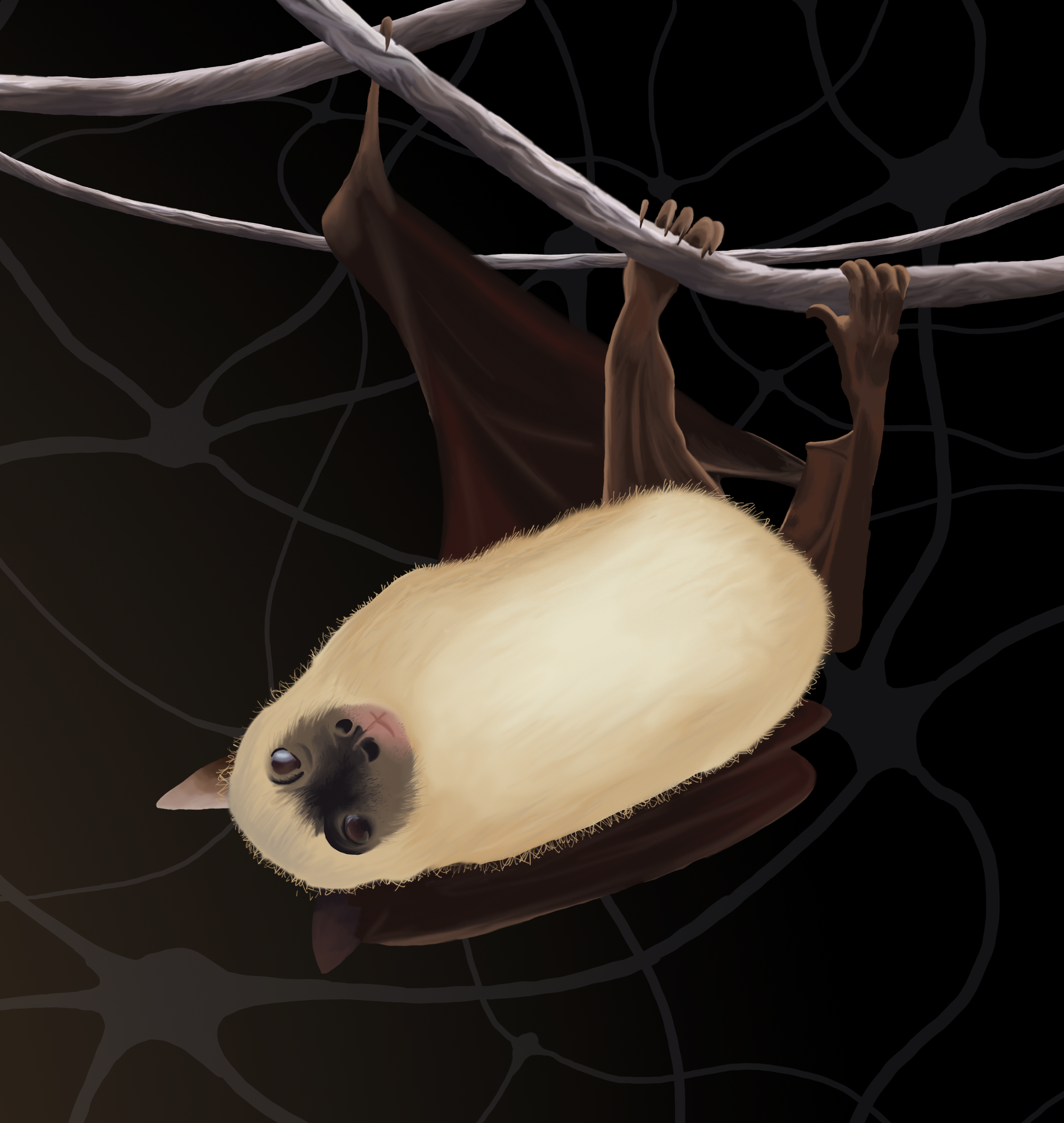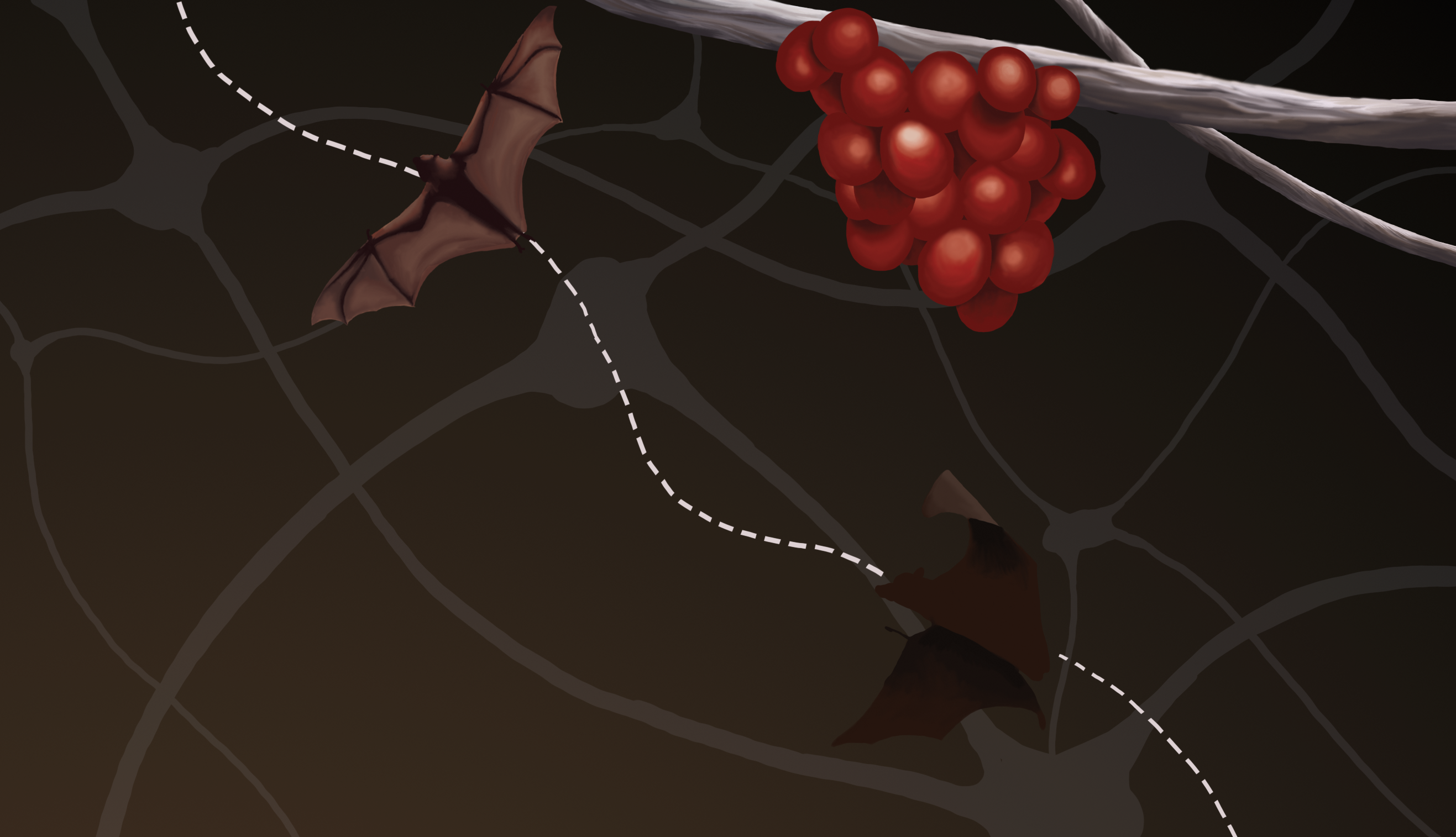Making (brain)waves
Neuroscientists go nocturnal

Understanding what happens in the brain of a bat can help us better understand what happens in our own brains. The NeuroBat Lab, headed by Professor Michael Yartsev in the Department of Bioengineering and the Helen Wills Neuroscience Institute, studies the neurological activity of bats as they navigate and communicate to help create a general understanding of how mammalian brains operate. While the use of bats is a bit unconventional, Professor Yartsev notes that bats “have unique features… which give us really good accessibility to address questions that would be very difficult… to address in other mammals.” Specifically, common bat behaviors like flight and vocalization make bat brains better models to study three-dimensional navigation and vocal learning compared to other commonly used mammals, such as monkeys. Thus, by studying bats, the NeuroBat Lab can decode the neural activity underlying natural behaviors, and these findings may be generalizable to humans.
The work of the NeuroBat Lab has identified multiple areas of the brain involved in three-dimensional navigation. As the only mammal that flies, bats provide a unique opportunity to explore the representations of three-dimensional space in the brain. Indeed, researchers at the NeuroBat Lab have identified the neuron activity and responses associated with pathfinding, spatial position information, and target selection. To make these discoveries, the team has employed novel research techniques and equipment in what is called the Flight Room. In the Flight Room, the scientists have created an environment to study bats that is completely free from human interference. This involves the strategic placement of numerous cameras, microphones, platforms, and automatic sensors. The ability to monitor bats in a human-free environment—which is done with special miniature microscopes that allow the researchers to literally look inside the brain of the bat—is especially important, as it allows for the bats to fly as they would naturally without the interference of humans. Even though the bats are prompted to fly to a specific point through reward motivation, the absence of humans in the room allows for the bats to decide how to get there independently. The reproducibility of studies through remote programming of the sensors, lights, and microphones is one of the greatest advantages of the Flight Room.

Bats are also well-equipped for Yartsev and his group to study vocal learning. Most studies of vocal learning to this point have focused on birds; however, since birds are not mammals, they are less generalizable to humans. Meanwhile, other mammals that can vocalize, such as cats or monkeys, know these vocalizations innately and do not need to learn them. Bats, however, can mimic, and therefore learn, sounds. Understanding how bats learn to vocalize is important to humans because, as Professor Yartsev notes, “about 7% of individuals have some sort of language impairment…, yet we know relatively little about what it is about our brain that allows it to basically do this complex behavior [of learning speech] and bats might just provide us with this very interesting and elusive insight.” The preliminary stages of this research have uncovered that bats can modify their vocalizations by specific parameters when taught to do so, and these changes persist after the teaching period is over. This discovery proves that the vocal plasticity of bats is long-lasting and that vocal learning can continue into adulthood, which is similar to humans. These findings solidify bats as a relevant species to study when understanding mammalian vocal learning.
The important work of the NeuroBat Lab at UC Berkeley is helping us to understand the brain activity that defines humanity. The research of the NeuroBat Lab may be the missing puzzle piece to understanding mammalian neurology. Professor Yartsev stresses the importance of his work in concert with studies of other species, noting that rigorous conclusions “can only be achieved through comparative science [and] being able to look at the same questions across species.” The studies of the NeuroBat Lab therefore provide additional examples of neural function to compare with those of more common models (e.g. mice, rats, or monkeys) and help us better understand common themes across species. These bats, and the scientists working with them, are helping us navigate our own neural connections.
------- Gretchen Brown is a graduate student in chemistry
Design by Chenyu Zhang
This article is part of the Fall 2022 issue.





